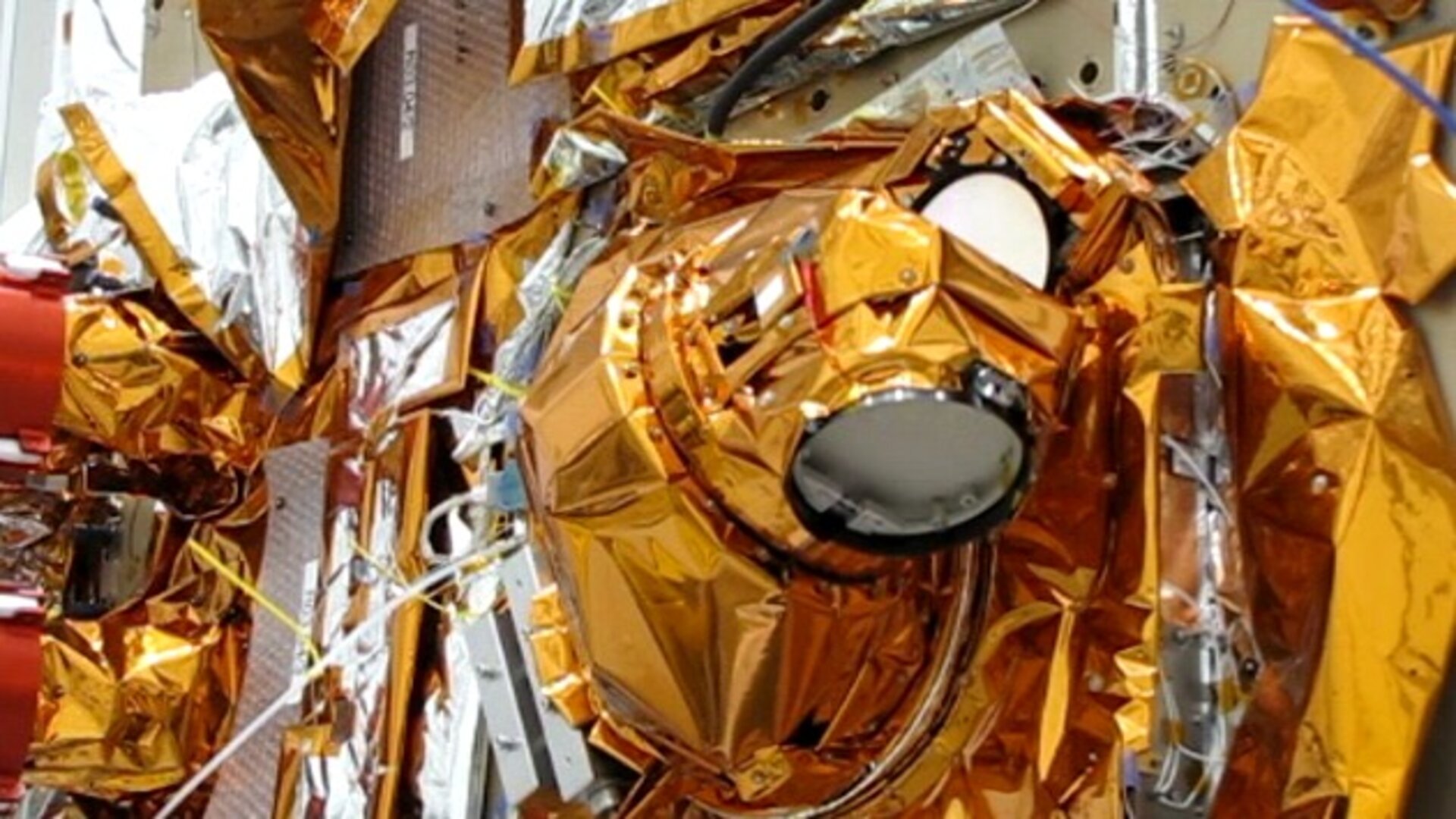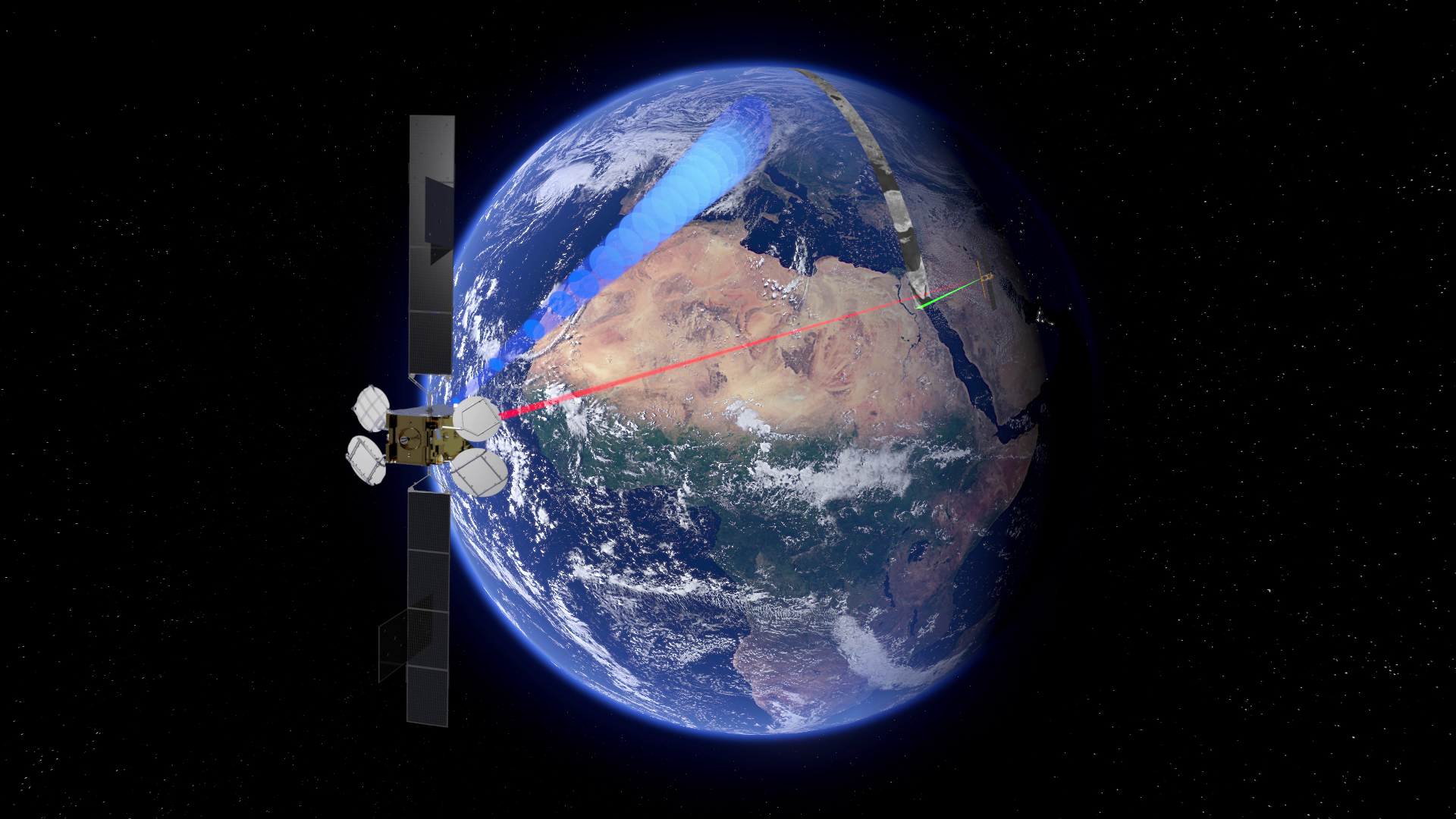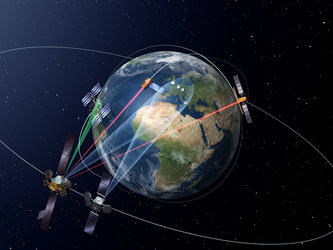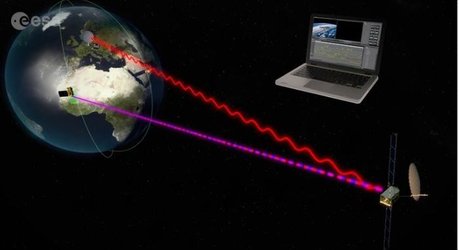European Data Relay System confirms services for Copernicus in cooperation with the European Commission
Following the recent decision confirming the ESA/Airbus Defence and Space (Airbus DS) partnership on the European Data Relay System (EDRS), agreement has been reached with the European Commission (EC) for the provision of EDRS services to the European Union Copernicus programme.
Subsequently, ESA and Airbus DS have signed a service level agreement on 20 February 2015 to provide high-speed communications to the Copernicus Sentinel-1 and -2 dedicated missions, starting in 2015 until 2021, with an option for extension until 2028.
The agreement includes the setup of a Joint Steering Committee, ensuring high-level representation of the EC, ESA and Airbus DS, to monitor EDRS status and evolution with the objective of maintaining EDRS as an autonomous European data relay capability.
At the same occasion, ESA and Airbus DS also signed a service contract providing data relay capacity to other ESA and ESA partner missions in the future. As a first additional user, ESA’s Columbus module on the International Space Station (ISS) is planned to be provided with data relay services starting in 2018, which will support scientific experiments and enhance communication services to the astronauts on board the ISS.


Access the video
This confirms Copernicus and Columbus/ISS as initial EDRS anchor customers. It allows Airbus DS to invest into the completion and operations of EDRS. Airbus DS is expected to develop the third-party commercial market for EDRS services and to support the evolution of the system towards global coverage. These agreements allow ESA to consolidate its support to the EDRS evolution as initiated at the 2014 ESA Ministerial Council with the GlobeNet Programme.
Like optical fibre on Earth, EDRS, which is also referred to as a ‘Space Data Highway’, will provide laser communications in space with data rates of up to 1.8 Gigabits per second. EDRS will provide near-real-time data transfer from Earth observation satellites, drones or aircraft to Earth via geostationary communication satellites. It will provide ESA with the ability to download larger volumes of image data faster and more securely, helping to improve environmental monitoring, disaster response and crisis management.
The Copernicus satellites Sentinel-1A and -1B and Sentinel-2A and -2B are equipped with Laser Communication Terminals (LCT) and will be the anchor users of EDRS. Besides Copernicus, EDRS will be able to serve commercial and institutional users worldwide.











